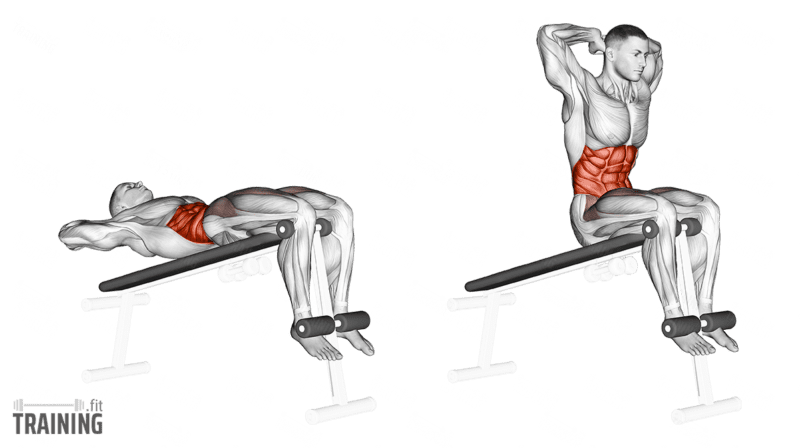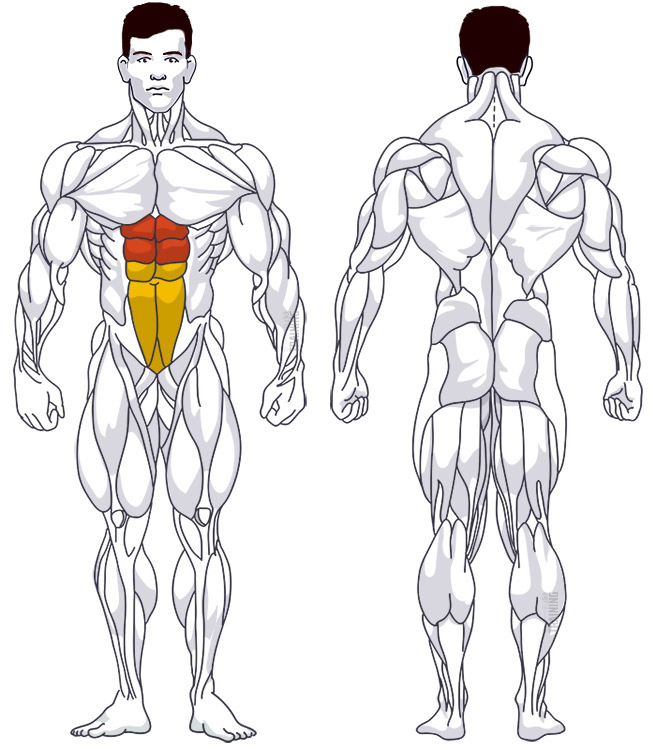Decline Sit-Ups
Isolation exercise, Body weightOverview

Main muscles
- Abdomen: Straight abdominal muscle
(Musculus rectus abdominis)
Decline Sit-Ups: Basics and alternatives

Involved main muscle groups:
Decline Sit-Ups
Decline Sit-Ups are a step up from regular “floor sit-ups” for advanced users. The movement is the same: you lie on your back and lift your upper body towards your legs at the hips, but in Decline Sit-Ups you start with your body bent down. This increases the range of motion and works your upper abs more effectively.
For upper abdominal workouts, you can also try crunches or cable crunches. To work your lower abs, try knee raises or scissor kicks.
Correct execution
There’s no set rule for the decline angle, but it’s best to start with a lower angle so you can get used to the new posture and movement. Increase the angle as your fitness improves. Usually, a range of 30 to 45 degrees is recommended.
When it comes to arm position, you have a choice: hold your hands loosely by your head or place them on your chest. In either case, don’t use your arms to swing or pull yourself up.
Decline Sit-Ups are also a good way to add weight to your workout. If you’re already beyond the point where regular Sit-Ups provide enough challenge, try holding a barbell plate with a handle in front of your chest. The larger range of motion makes this a more effective exercise than regular Sit-Ups.
Video tutorial
Step-by-step instructions
Start by sitting on the decline bench, which should be adjusted to around 30-45 degrees.
Clamp your legs into the designated holders behind the cushions.
Place your hands loosely in front of your chest, then lean back so your back and head touch the rest of the bench. Your back should be straight with a slight arch. You’re now in the starting position.
Lift your upper body towards your knees, bending your back slightly to get a stronger abdominal contraction. Hold the top position for a moment, then lower your body back to the starting position slowly and controlled.
Common mistakes
Make sure to use a full range of motion. This is easiest to do by keeping your back straight in the starting position, not bent. Bending your back will take the focus off your upper abs.
Swinging is not allowed in Decline Sit-Ups, as it takes away from the workout. Just be mindful and you can avoid swinging, since your legs are clamped in the decline bench.
Arm position can also be tricky in Decline Sit-Ups. If you hold your hands behind your head, don’t pull your head up. This puts unnecessary strain on your neck. Place your fingers loosely on the back of your head, or keep your arms in front of your chest.